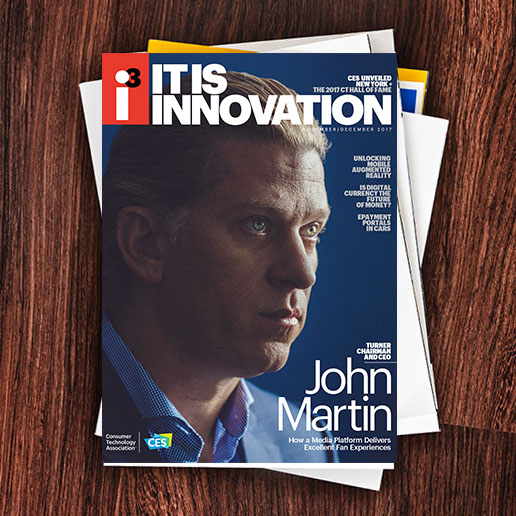Embedded sensors are the eyes and ears of the connected world, feeding the brain of the global economy by receiving continuous data. Sensors at the heart of the Internet of Things (IoT) are linking to cutting edge machine vision, visual recognition, technical infrastructure and cloud services as well as self-driving cars, health monitoring, machinery and even advanced farming technologies. The IoT allows companies to extract data, for example, from fitness bands and smart home devices that can be spun into actionable analytics and insights on the backend.
Sensors and chips from companies like AMD, Intel, NVIDIA and Qualcomm are powering the connected intelligent universe. It is projected there will be 22.5 billion IoT devices in 2021, up from 6.6 billion in 2016, according to BI Intelligence. This is triggering a domino effect in the connected device ecosystem. Companies will spend almost $5 trillion on IoT in the next five years and the proliferation of connected devices and the massive increase in data has started an analytics revolution.
AI and machine learning are shifting the IoT conversation beyond the technical challenges of connecting billions of devices and towards how smart design, product innovation and new use cases can create unique business and service models. BI Intelligence forecasts there will be $4.8 trillion in IoT investment between 2016 and 2021. AI is shaping the human experience, as new tools are being built that will give one’s senses superpowers. We’re moving beyond Siri or Cortana phone chatbots — as digital assistants and bots are being created to perform all sorts of functions. AI plays a significant role in Natural Language Generation as bots learn to decipher human speech, particularly when humans are pulling together vast amounts of data.
Transforming Fitness and Health Sensors, data, and AI are transforming clinical health care. New tools are shaping the relationship between physicians and patients at home or in the hospital. On another level, Google’s Verily, for instance, aims to make robots better surgical assistants using machine learning and advanced image processing. Miniaturized electronics, low power wireless connectivity and cloud services are enabling the development of connected wearables that monitor health and can produce actionable data for the user, caretaker or clinician. Connected wearables such as cardiac rhythm management devices, ECG monitors, mobile Personal Emergency Response Systems (mPERS), tattoos and wearable computers are already common in the medical, health monitoring and enterprise segments — and are becoming consumerized.
AI, IoT and other technologies will radically disrupt how cities provide services making life easier and safer for residents. They will remake every aspect of urban life, ranging from monitoring activities like parking occupancy, storm sewer levels, street lighting and smart water systems to improving public safety, transportation, policing, electricity, and how city services are delivered. Cities need to prepare to accommodate the next generation of self-driving vehicles with the necessary infrastructure including road modifications, signage and communications to manage traffic congestion.
While challenges remain, mobile device IoT implementations will generate huge quantities of real-time raw data for advanced analytics. With machine learning, AI and other technologies, the promise includes improved communities.

i3, the flagship magazine from the Consumer Technology Association (CTA)®, focuses on innovation in technology, policy and business as well as the entrepreneurs, industry leaders and startups that grow the consumer technology industry. Subscriptions to i3 are available free to qualified participants in the consumer electronics industry.